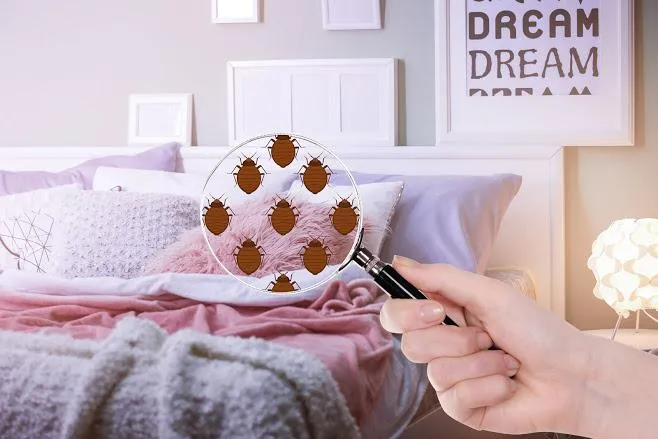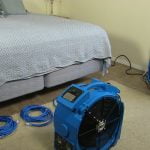What Attracts Bed Bugs to a Person?
What Attracts Bed Bugs to a Person?

What Attracts Bed Bugs to a Person? Bed bugs are tiny, oval-shaped insects that feed on the blood of humans and animals. These pests can be found in homes, hotels, and even public places such as movie theaters and public transportation. Bed bugs are a nuisance, and their bites can cause skin irritation and other health problems. But have you ever wondered why bed bugs are attracted to certain people and not others? In this article, we will explore the factors that attract bed bugs to a person and how you can protect yourself from these pesky insects.
Table of Contents
- What are Bed Bugs?
- Understanding Bed Bug Behavior
- Factors That Attract Bed Bugs
- Body Heat
- Carbon Dioxide
- Skin Odor
- Blood Type
- Movement
- Clothing
- How to Protect Yourself from Bed Bugs
- Prevention Tips
- Detection and Treatment
- Conclusion
- FAQs
What are Bed Bugs?
Bed bugs are small, wingless insects that belong to the family Cimicidae. They are about the size of an apple seed and are reddish-brown in color. Bed bugs are nocturnal and feed on the blood of warm-blooded animals, including humans. These pests are often found in places where people sleep or rest, such as mattresses, bed frames, and furniture.
Understanding Bed Bug Behavior
Bed bugs are attracted to warmth and carbon dioxide, which are produced by humans and animals during respiration. They are also attracted to certain chemicals found in the skin’s oils and sweat. Bed bugs can sense these chemicals from a distance and use them to locate their next meal.
Bed bugs are also very good at hiding. During the day, they will often hide in cracks and crevices near their host, making it difficult to detect and eliminate them.
Factors That Attract Bed Bugs
– Body Heat
Bed bugs are attracted to body heat. When humans or animals sleep, they emit heat that bed bugs can sense from a distance. This heat source guides bed bugs to their host.
– Carbon Dioxide
Bed bugs are attracted to carbon dioxide, which is produced by humans and animals during respiration. When we exhale, we release carbon dioxide into the air, and bed bugs can detect it from a distance.
– Skin Odor
Bed bugs are attracted to certain chemicals found in the skin’s oils and sweat. These chemicals create a distinct odor that bed bugs can sense from a distance.
– Blood Type
Recent studies have shown that bed bugs are more attracted to certain blood types than others. Bed bugs are most attracted to people with blood type O, followed by blood types A and B.
– Movement
Bed bugs are also attracted to movement. When a person moves in their sleep, it creates vibrations that bed bugs can detect. This movement helps guide bed bugs to their host.
– Clothing
Bed bugs can also be attracted to clothing. Dark-colored clothing, in particular, can provide a hiding spot for bed bugs during the day.
How to Protect Yourself from Bed Bugs
– Prevention Tips
The best way to protect yourself from bed bugs is to prevent an infestation from occurring in the first place. Here are some prevention tips:
- Inspect your hotel room for bed bugs before unpacking.
- Use a protective cover for your mattress and box spring.
- Vacuum your home regularly, paying special attention to cracks and crevices.
- Reduce clutter in your home, which can provide hiding spots for bed bugs.
- Wash and dry your bedding on high heat to kill any bed bugs that may be present.
– Detection and Treatment
If you suspect that you have a bed bug infestation, it’s important to act quickly. Here are some steps you can take:
- Inspect your home for bed bugs. Look for signs of bed bugs, such as small blood stains on your sheets, fecal matter, and shed skins.
- Contact a pest control professional. Bed bugs are difficult to eliminate, and a professional can provide effective treatment options.
- Wash and dry all of your clothing, bedding, and linens on high heat to kill any bed bugs that may be present.
- Consider using bed bug traps or interceptors to monitor and trap bed bugs.
Conclusion
In conclusion, bed bugs are attracted to a variety of factors, including body heat, carbon dioxide, skin odor, blood type, movement, and clothing. While it may be impossible to completely avoid attracting bed bugs, there are steps you can take to protect yourself, such as using protective covers for your mattress and box spring, vacuuming regularly, and washing your bedding on high heat. If you suspect that you have a bed bug infestation, it’s important to act quickly and contact a pest control professional.
FAQ’s – Frequently Asked Questions
- Can bed bugs transmit diseases?
- While bed bugs are a nuisance and can cause skin irritation, there is no evidence to suggest that they can transmit diseases.
- Are bed bugs attracted to dirty environments?
- No, bed bugs can be found in both clean and dirty environments. They are attracted to warmth, carbon dioxide, and certain chemicals found in the skin’s oils and sweat.
- Can bed bugs travel on clothing or luggage?
- Yes, bed bugs can hitchhike on clothing, luggage, and other belongings. It’s important to inspect your belongings and wash them on high heat after traveling.
- Can you see bed bugs with the naked eye?
- Yes, bed bugs are visible to the naked eye, although they are small and can be difficult to detect.
- How long do bed bugs live?
- Bed bugs can live for several months without feeding. Adult bed bugs can live for up to a year under favorable conditions.





